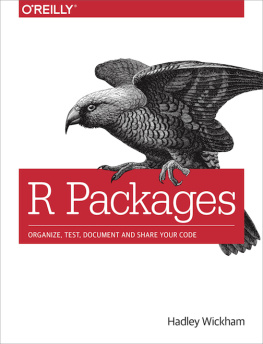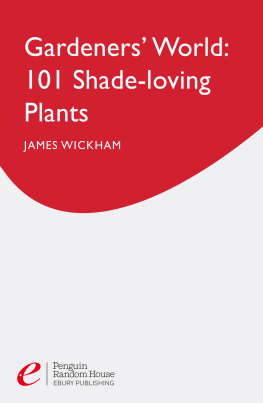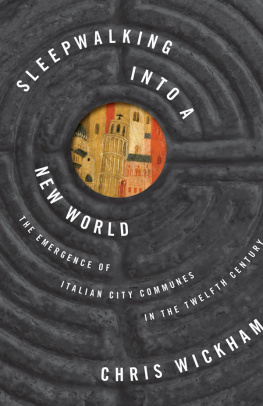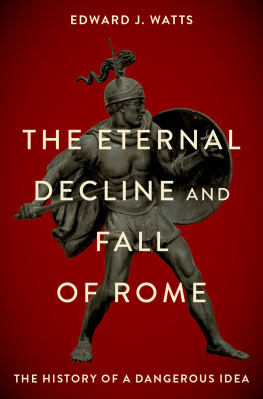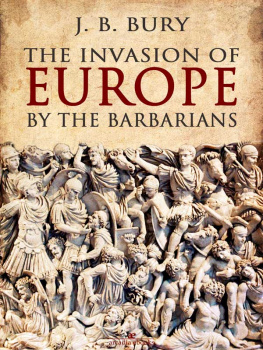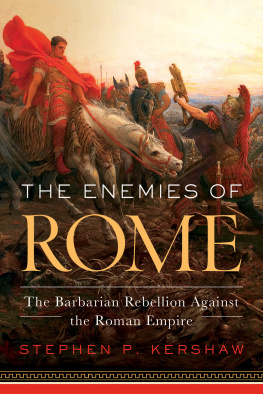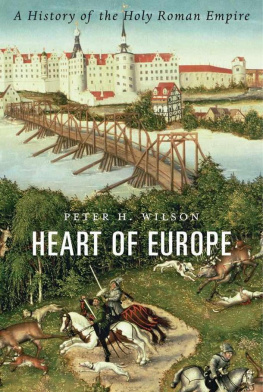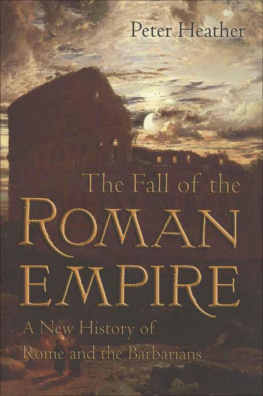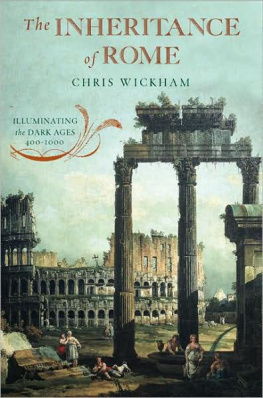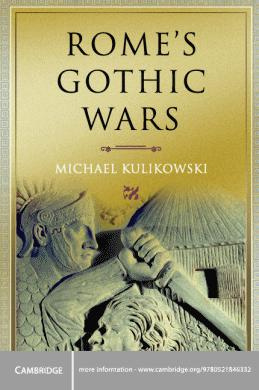THE PENGUIN HISTORY OF EUROPE
General Editor: David Cannadine
I: SIMON PRICE Classical Europe
II: CHRIS WICKHAM The Inheritance of Rome: A History of Europe from 400 to 1000*
III: WILLIAM JORDAN Europe in the High Middle Ages*
IV: ANTHONY GRAFTON Renaissance Europe, 13501517
V: MARK GREENGRASS Reformation Europe, 15151648
VI: TIM BLANNING The Pursuit of Glory: Europe 16481815*
VII: RICHARD J. EVANS Europe 18151914
VIII: IAN KERSHAW Twentieth-Century Europe
* already published
CHRIS WICKHAM
The Inheritance of Rome
A History of Europe from 400 to 1000
ALLEN LANE
an imprint of
PENGUIN BOOKS
ALLEN LANE
Published by the Penguin Group
Penguin Books Ltd, 80 Strand, London WC2R 0RL , England
Penguin Group (USA) Inc., 375 Hudson Street, New York, New York 10014, USA
Penguin Group (Canada), 90 Eglinton Avenue East, Suite 700, Toronto, Ontario, Canada M4P 2Y3
(a division of Pearson Penguin Canada Inc.)
Penguin Ireland, 25 St Stephen's Green, Dublin 2, Ireland
(a division of Penguin Books Ltd)
Penguin Group (Australia), 250 Camberwell Road, Camberwell, Victoria 3124, Australia
(a division of Pearson Australia Group Pty Ltd)
Penguin Books India Pvt Ltd, 11 Community Centre, Panchsheel Park, New Delhi 110 017, India
Penguin Group (NZ), 67 Apollo Drive, Rosedale, North Shore 0632, New Zealand
(a division of Pearson New Zealand Ltd)
Penguin Books (South Africa) (Pty) Ltd, 24 Sturdee Avenue, Rosebank, Johannesburg 2196, South Africa
Penguin Books Ltd, Registered Offices: 80 Strand, LONDON WC2R 0RL , England
www.penguin.com
Copyright Chris Wickham, 2009
The moral right of the author has been asserted
All rights reserved.
Without limiting the rights under copyright reserved above, no part of this publication may be reproduced, stored in or introduced into a retrieval system, or transmitted, in any form or by any means (electronic, mechanical, photocopying, recording or otherwise) without the prior written permission of both the copyright owner and the above publisher of this book
ISBN: 978-0-14-190853-3
For the students of AMH, the Ancient and Medieval History degree of the University of Birmingham, 19762005, who have heard and discussed much of this before
Contents
List of Maps
List of Illustrations
Acknowledgements
Numerous friends read chapters of this book for me; their criticisms and comments saved me from a wide range of errors. In the order of the chapters they read, they were Leslie Brubaker, Conrad Leyser, Kate Cooper, Walter Pohl, Ian Wood, Julia Smith, Paul Magdalino, Hugh Kennedy, Jinty Nelson, Pat Geary, Pauline Stafford and Wendy Davies. Equally essential, for sharing ideas and unpublished work with me, were Teresa Bernheimer, Leslie Brubaker, Leslie Dossey, Caroline Goodson, John Haldon, Guy Halsall, Sarah Halton, Anne-Marie Helvtius, Mayke de Jong, Christina Pssel, Carine van Rhijn, Petra Sijpesteijn and Mark Whittow. Sue Bowen heroically typed the whole text, and Harry Buglass drew the maps; the index is by Alicia Corra. I am very grateful to them all. I have not been able to incorporate publications which came out after May 2007; not systematically, at least.
Birmingham
May 2007
Maps
1
Introduction
Early medieval Europe has, over and over, been misunderstood. It has fallen victim above all to two grand narratives, both highly influential in the history and history-writing of the last two centuries, and both of which have led to a false image of this period: the narrative of nationalism and the narrative of modernity. Before we consider a different sort of approach, we need to look at both of these, briefly but critically, to see what is wrong with each; for most readers of this book who have not already studied the period will have one or both in the front of their minds as a guiding image.
The early Middle Ages stands at the origin, whether authentic or fictional, of so many European nation states that it has taken on mythic significance for historians of all the generations since nationalism became a powerful political image, in the early nineteenth century, and often earlier still. People write books called The Birth of France, or, more generally, The Growth of Europe, looking as they do so for the germs of a future national or European identity, which can be claimed to exist by 1000 in France, Germany, England, Denmark, Poland, Russia and a host of other nations if one looks hard enough. Early medieval history thus becomes part of a teleology: the reading of history in terms of its (possibly inevitable) consequences, towards whatever is supposed to mark why we are best we English, or French, or (western) Europeans or at least, for less self-satisfied communities, why we are different. The whole of early medieval English history can thus be seen in terms of the origins of the nation state; the whole of early medieval Low Countries history in terms of the origins of the commercial dynamism of the future Belgium or Netherlands. The lack of evidence for our period helps make these nationalist readings common, even today. They are false readings all the same; even when they are empirically accurate (the English did indeed have a unitary state in 1000, production and exchange were indeed unusually active in what would become Belgium), they mislead us in our understanding of the past. This is bad history; history does not have teleologies of this kind.
Europe was not born in the early Middle Ages. No common identity in 1000 linked Spain to Russia, Ireland to the Byzantine empire (in what is now the Balkans, Greece and Turkey), except the very weak sense of community that linked Christian polities together. There was no common European culture, and certainly not any Europe-wide economy. There was no sign whatsoever that Europe would, in a still rather distant future, develop economically and militarily, so as to be able to dominate the world. Anyone in 1000 looking for future industrialization would have put bets on the economy of Egypt, not of the Rhineland and Low Countries, and that of Lancashire would have seemed like a joke. In politico-military terms, the far south-east and south-west of Europe, Byzantium and al-Andalus (Muslim Spain), provided the dominant states of the Continent, whereas in western Europe the Carolingian experiment (see below, Chapters ) had ended with the break-up of Francia (modern France, Belgium and western Germany), the hegemonic polity for the previous four hundred years. The most coherent western state in 1000, southern England, was tiny. In fact, weak political systems dominated most of the Continent at the end of our period, and the active and aggressive political systems of later on in the Middle Ages were hardly visible.
National identities, too, were not widely prominent in 1000, even if one rejects the association between nationalism and modernity made in much contemporary scholarship. We must recognize that some such identities did exist. One can make a good case for England in this respect (the dismal years of the Danish conquest in the early eleventh century produced a number of texts invoking a version of it). Italians, too, had a sense of common identity, although it hardly reached south of Rome (of course, that is pretty much still true today), and did not lead to a desire for political unity. Geographical separation, such as that provided by the English Channel and the Alps, helped both of these, as it also did the Irish, who were capable of recognizing a version of an Irish community, however fragmented Ireland really was. In the parallel case of Byzantium, what gave its inhabitants identity was simply the coherence of its political system, which was much greater than any other in Europe at that time; Byzantine national identity has not been much considered by historians, for that empire was the ancestor of no modern nation state, but it is arguable that it was the most developed in Europe at the end of our period. By contrast, France, Germany and Spain (either Christian or Muslim) did not have any such imagery. The Danes may have had it, but in Scandinavia as a whole there is good evidence for it only in Iceland. The Slav lands were still too inchoate to have any version of identity not specifically tied to the fate of ruling dynasties. And, as will be stressed often in this book, a common language had very little to do with any form of cultural or political solidarity at all. The image of the birth of Europe, and the birth of the great bulk of the later nations of Europe, is thus in our period not only teleological, but close to fantasy. The fact that there are genealogical links to the future in so many tenth-century polities is an interesting fact, but of no help whatever in understanding the early Middle Ages.
Next page


